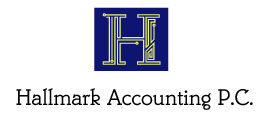In a recent announcement, the Internal Revenue Service (IRS) has decided to delay the implementation of the new $600 Form 1099-K reporting threshold for third-party payment organizations. The decision to treat 2023 as a transition year comes in response to feedback from taxpayers, tax professionals, and payment processors. The IRS is also planning a phased-in approach, with a $5,000 threshold set for 2024 to gradually implement the reporting requirements introduced under the American Rescue Plan.
�What’s Changing in 2023
The initial plan was to enforce a $600 reporting threshold for Form 1099-K in 2023. However, due to concerns about potential confusion and to address feedback from various stakeholders, the IRS has decided to delay the implementation. This means that for the tax year 2023, payment apps and online marketplaces will only be required to send Forms 1099-K to taxpayers who receive over $20,000 and have over 200 transactions.
Phased-In Approach for 2024
To further ease the transition and address operational concerns, the IRS is introducing a phased-in approach. In 2024, the reporting threshold will be increased to $5,000. This gives the agency time to review and improve its processes, taking into account feedback and concerns raised by taxpayers and other stakeholders.
Who Receives Form 1099-K
Form 1099-K is relevant for individuals and businesses using payment apps or online marketplaces to receive payments for selling goods or providing services. This includes everyone from side hustlers and small businesses to casual sellers who may have sold personal items at a loss.
Navigating Form 1099-K
For those who receive a Form 1099-K, the IRS provides resources on its Understanding Your Form 1099-K webpage. Taxpayers should review the form, ensure the accuracy of the reported amount, and identify any deductible expenses associated with the payment that can be claimed when filing taxes.
Reporting Personal Item Sales
Selling personal items can create complexity in tax reporting, even when items are sold at a loss.
If personal items were sold at a gain, taxpayers must report the gain as income on both Form 8949 and Schedule D (Form 1040).
If your client sold personal items for less than they originally paid, you should report the loss on Schedule 1 (Form 1040). To do so, enter the Form 1099-K gross payment amount on Part I – Line 8z, and then offset that amount on Part II – Line 24z. For Drake Software customers, Drake Tax automatically makes the offset on Line 24z.
While business losses can be reported on Form 8949 to be carried to Schedule D, Capital Gains and Losses, personal losses cannot.
What Not to Report
It’s crucial to note that reporting is not required for personal transactions, such as gifts, ride-sharing expenses, or shared household bills. These transactions are not taxable and should not be reported on Form 1099-K.
Navigating the Changes
The IRS’s decision to delay the 2023 Form 1099-K reporting threshold and implement a phased-in approach for 2024 reflects a commitment to addressing taxpayer concerns and ensuring a smoother transition. Tax preparers have the opportunity to help their clients stay informed about these changes, review their Form 1099-K carefully, and utilize available IRS resources to navigate the complexities of tax reporting. As the IRS continues to refine its processes and provide updates, taxpayers and preparers alike can expect clearer guidelines for compliance with the evolving tax requirements.
Sources: IR-2023-221, FS-2023-27

